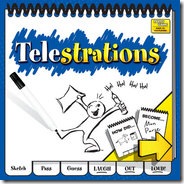What is a UGMA account? What is a UTMA account? How are they different? What is the purpose of using one over other savings vehicles?
We’re going to dive into those questions and a few others in the following piece.
What are they?
The UTMA and the UTMA are custodial accounts. An adult (the custodian) opens an account for the benefit of a minor.
UTMA stands for Uniform Transfer to Minors Act. UGMA stands for Uniform Gift to Minors Act. The difference has to do with the age of majority, but more on that later.
Characteristics
For all intents and purposes, these accounts are treated the same. As I said, an adult opens the account for the benefit of a minor.
The account itself does not have a limit of how much you can contribute to it, however, there is a gift tax exclusion for the custodian or anyone else that contributes to the account. While I’m here, I should mention that anyone can put money into the account, not just the custodian.
Anyway, the gift tax exclusion is $15,000 per recipient. If the person doing the gifting this amount, they could owe the gift tax.
As far as the age of the majority goes, generally the UGMA is 18 and the UTMA is 21. However, every state is different, so make sure you check to see what the age of majority is in your state.
Prior to the age of majority, the minor is unable to use the funds in the account UNLESS it’s for the benefit of said minor. Once they hit the age of majority, they can use the funds however they want.
Disadvantages
Two of the more common vehicles for education savings are the 529 plan and the Coverdell ESA. Now, I’m not going to go into those two, but they each share one key advantage. Any funds withdrawn for education-related expenses, come out tax-free.
The UTMA/UGMA does not have this capability. What’s more, the taxes on any capital gains made and/or dividends received throughout the year must be paid by the minor.
Also, funds sitting in a UTMA/UGMA, for the sake of the FAFSA, are considered the minor’s assets, and can negatively affect financial aid.
Advantages
There’ve been a lot of negatives so far, and if I’m being honest, there are other savings vehicles available that have more advantages.
The one thing I can think of as an advantage is accessibility.
With the 529 and the Coverdell ESA, any funds not used for education-related expenses are subject to a penalty.
With a UGMA/UTMA, the beneficiary can use the funds for anything that benefits them (while they’re a minor), or they can use them for anything at all once they’ve hit the age of majority.
Conclusion
If you are looking for accounts that are designed around saving for college, then a UTMA/UGMA is not for you. However, if you are looking for an account that is easy to set up, easy to use, and gives you more control, then I definitely would recommend utilizing one.
To make a formal recommendation, I’d go with the UTMA. Again, depending on your state’s rules, this enables you to save more for the beneficiary and prolongs when they can have access to those funds.
If you have any questions about what was said here and for my disclosures, go to my website.
If reading this blog post makes you want to try your hand at blogging, we have good news for you; you can do exactly that on Saving Advice. Just click here to get started.
Jacob Sensible is a financial advisor with decades of experience in the financial planning industry. His journey into finance began out of necessity, stepping up to support his grandfather during a health crisis. This period not only grounded him in the essentials of stock analysis, investment strategies, and the critical roles of insurance and trusts in asset preservation but also instilled a comprehensive understanding of financial markets and wealth management. Jacob can be reached at: jake.sensiba@mygfpartner.com.












